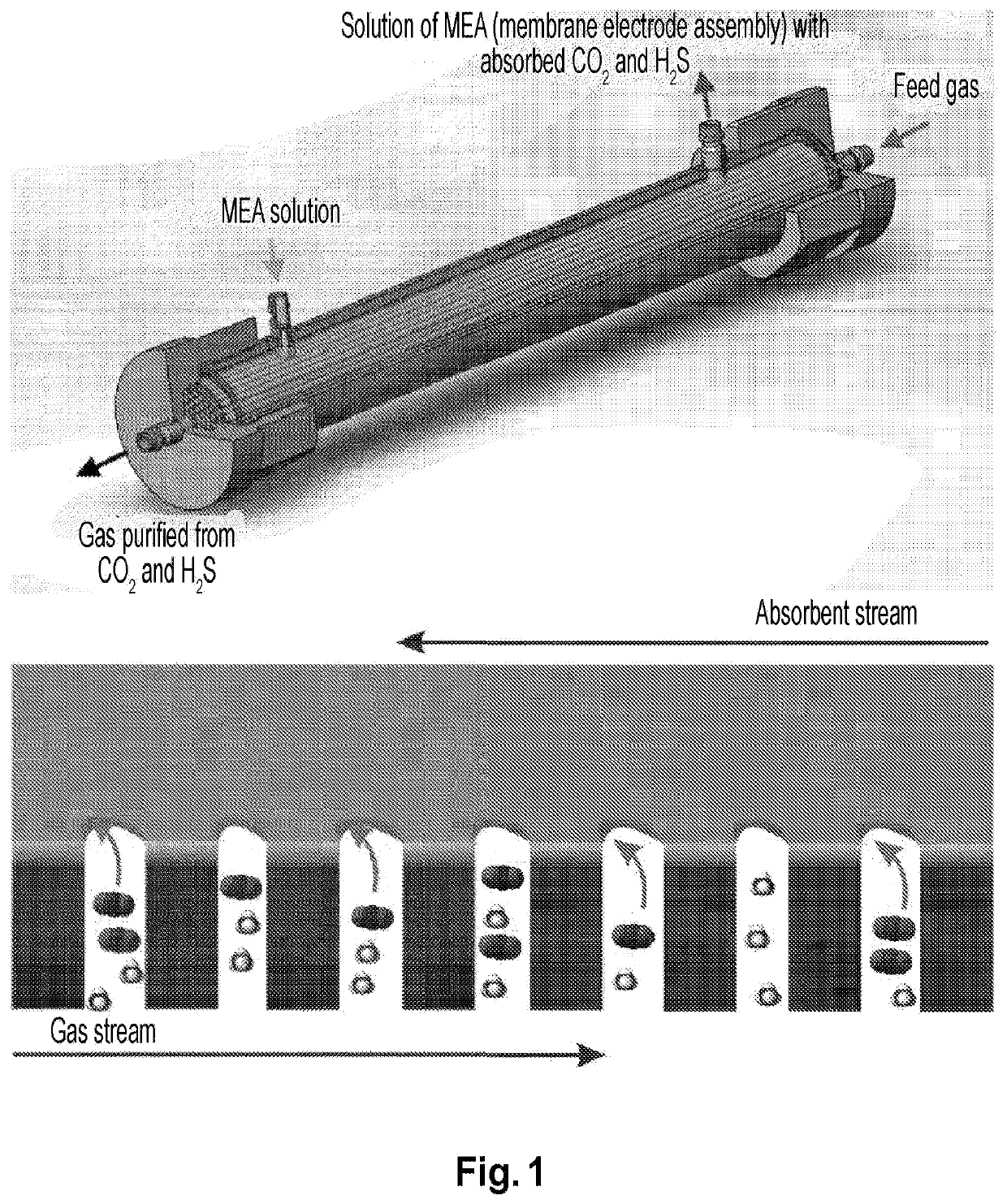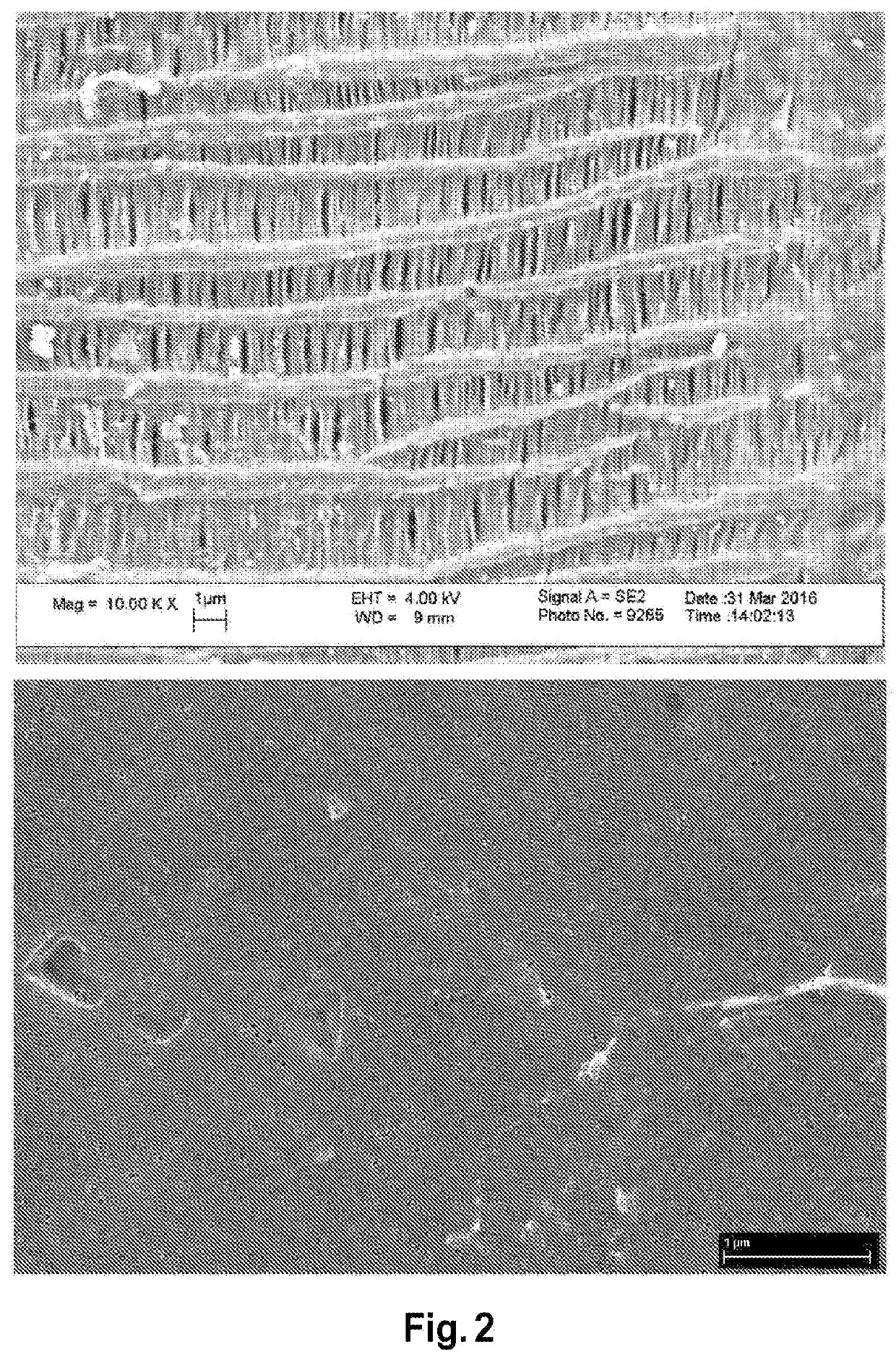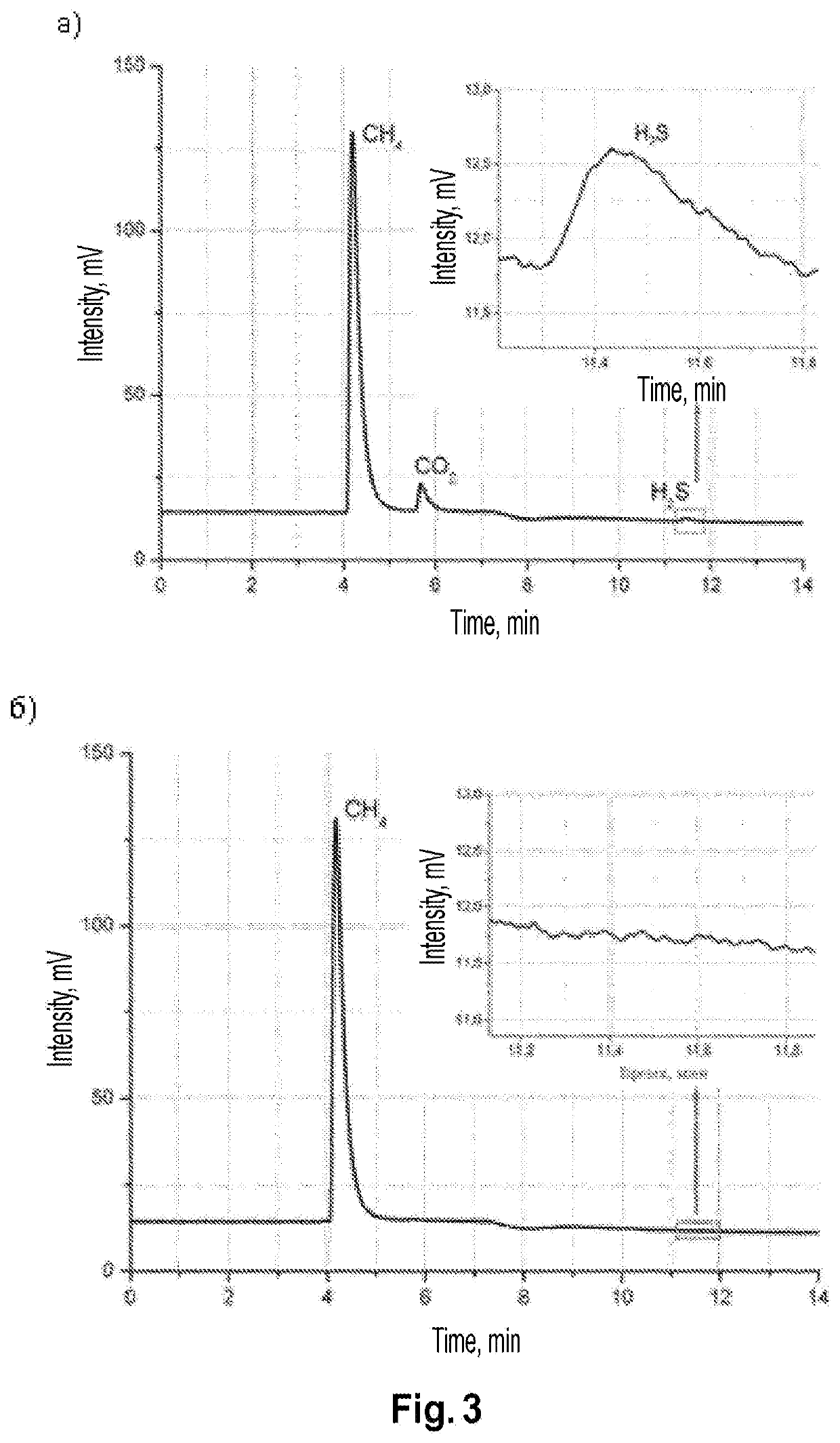Method of extracting components of gas mixtures by pertraction on nanoporous membranes
a nanoporous membrane and gas mixture technology, applied in gas treatment, distillation, gaseous fuels, etc., can solve the problems of reducing the dimensions of the membrane contactor, the operation and capital cost of their construction, and not providing for the use of transmembrane pressure, etc., and achieve the effect of increasing efficiency
- Summary
- Abstract
- Description
- Claims
- Application Information
AI Technical Summary
Benefits of technology
Problems solved by technology
Method used
Image
Examples
examples 1 to 6
O2 and H2S from Mixtures Simulating the Composition of Natural Gas
[0030]The process of extracting acidic components is carried out as follows. A feed gas is fed to the acid gas absorber of a pertraction module. The contact between an absorbent and the gas occurs at a temperature of ˜30° C., and the regeneration of an absorbent solution occurs at 80-130° C. For regeneration, the absorbent solution is cyclically fed to a regenerator where desorption of absorbed CO2 and H2S occurs.
[0031]The pertraction process is intensified by using a module designed for countercurrent mass exchange. The membrane pertraction module includes an absorber body with a cartridge of hollow polymer fibers and a regenerator. The module provides for the installation and preservation of hollow fiber membrane elements that provide a possible contact between liquid and gaseous media under a process pressure of up to 10 atm, a gas flow rate of up to 10 nm3 / h, and a liquid flow rate of up to 0.1 nm3 / h. The hollow f...
PUM
| Property | Measurement | Unit |
|---|---|---|
| pore size distribution | aaaaa | aaaaa |
| pore diameter | aaaaa | aaaaa |
| pressure | aaaaa | aaaaa |
Abstract
Description
Claims
Application Information
 Login to View More
Login to View More - R&D
- Intellectual Property
- Life Sciences
- Materials
- Tech Scout
- Unparalleled Data Quality
- Higher Quality Content
- 60% Fewer Hallucinations
Browse by: Latest US Patents, China's latest patents, Technical Efficacy Thesaurus, Application Domain, Technology Topic, Popular Technical Reports.
© 2025 PatSnap. All rights reserved.Legal|Privacy policy|Modern Slavery Act Transparency Statement|Sitemap|About US| Contact US: help@patsnap.com



